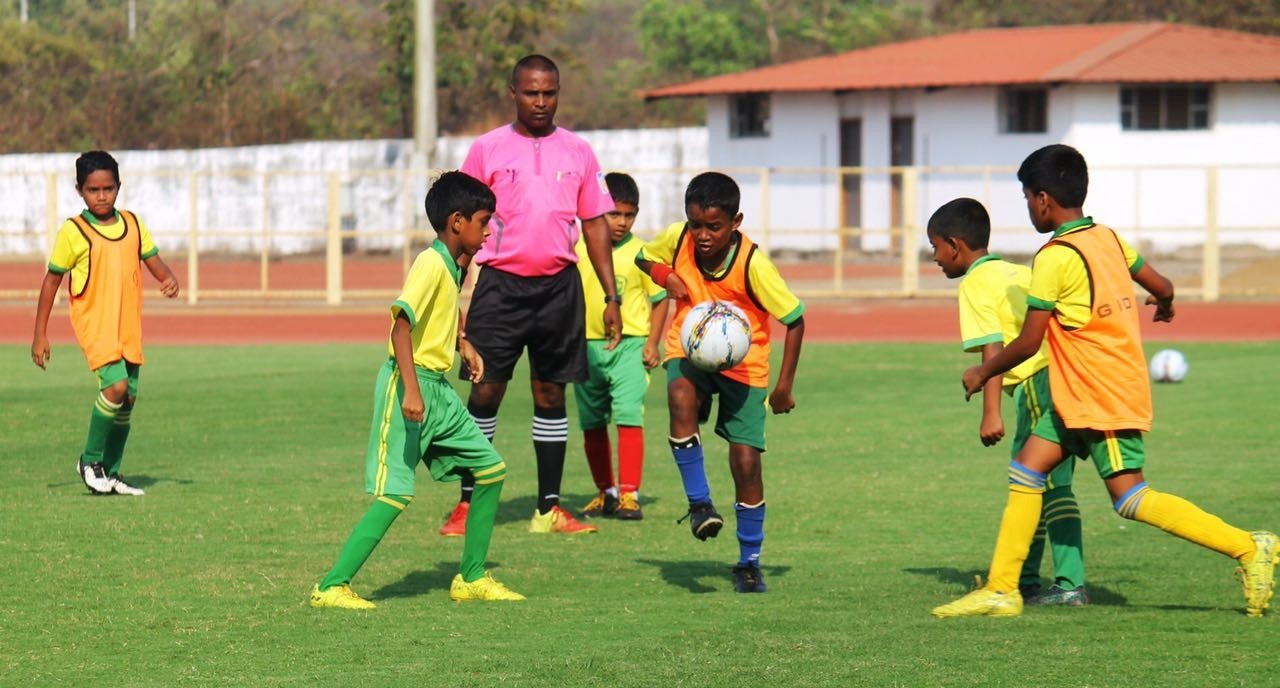
What has been the success rate of the Goa Football Development Council (GFDC) in producing talented footballers? According to a former footballer, the GFDC is still waiting to produce its first international footballer. “It is a failure,” he asserts, explaining his concerns.
One of the key questions he raises is the absence of a Technical Director for the GFDC. “Where is the Technical Director for the GFDC?” he asks, highlighting a significant gap in the development framework.
The GFDC operates with around 39 coaching centres across Goa, but many of the coaches are part-time employees, with some having worked with the GFDC since its inception. “The immediate need is to appoint a proven Technical Director to devise coaching plans and ensure that all coaches at each centre adhere to these plans. The TD should also ensure proper feedback on the implementation of these plans, so that all centres are aligned in their approach, providing players with similar playing styles that will strengthen the state team,” says a former football official from Salcete.
For context, the last Technical Director was Mariano Dias, a former Salgaocar SC defender turned coach, who also worked with the Indian youth team. However, Dias left over five years ago, citing the lack of progress at the GFDC. Since then, there has been no Technical Director, with the Member Secretary effectively running the show.
“There needs to be one Technical Director, and two Assistant Technical Directors, one for North Goa and one for South Goa,” adds a former player who is involved with one of the centres.
Currently, the system followed requires coaches to submit their weekly or monthly coaching plans, which are then approved by their superiors. However, there is no uniform coaching programme across all centres.
“We need a coaching programme or curriculum to be implemented at all centres. At the end of each academic year, a review should be conducted to assess progress on implementing a uniform coaching plan for all coaches,” says a former coach.
The lack of a technical director isn’t the only issue; the GFDC’s Elite Coaching Centre, which was closed due to the COVID-19 pandemic, has yet to resume operations. “The GFDC Academy in Margao, once run by Robert Fernandes, was a good example of effective coaching. Unfortunately, it is now defunct,” laments the official.
The problems go beyond just the coaching framework. “There has been no chairman at GFDC for the last three years, ever since Brahmanand Sankhwalkar’s tenure ended,” the official points out. “Without leadership and a committee, the GFDC’s functioning has suffered. It’s safe to say it has been a failure.”
The official further suggests that the GFDC should come under the Goa Football Association (GFA), as this could streamline resources and improve the utilisation of coaches. “If GFDC comes under GFA, the GFA can request each village club to adopt the centres. This would allow the age limit to be extended up to 18 years, instead of the current limit of 12 years. With the same resources, a wider pool of talent can be covered, and continuity will be assured. Everyone wins, and clubs will be more motivated to contribute,” he adds.
Coach motivation: Implementing a carrot and stick policy
A former footballer who has been closely following the GFDC’s football development model suggests adopting a ‘carrot and stick’ policy to motivate and encourage coaches and players. “Promising coaches should be sent for higher-level training, while those not showing results should be let go,” he says.
He also points out that the remuneration for coaches and officials at the centres has remained stagnant for the last 13 years. “If coaches were paid Rs 10,000 back then, they’re still getting the same today. This needs to change, and they should also receive the necessary equipment and support,” he adds.
On a final note, he stresses that a thorough evaluation is needed to understand what’s going wrong with the GFDC and to find ways to get it back on track.
---
The structure of GFDC: Who’s doing what
The GFDC’s current structure, personnel, and operational effectiveness have been subjects of discussion, particularly regarding its impact on football growth. Here, we outline the leadership, structure, and operations within GFDC, highlighting both its strengths and areas of concern.
Leadership and structure
The GFDC's coaching system is overseen by: Lawjyo Gomes, Technical Assistant; Denzil Pereira, Personal Assistant, Coordination Section; Franklyn Roncon, Football Development Officer – Management. These individuals handle the operational and technical aspects of coaching across various centres in Goa.
Reporting structure
Centre Heads report to both the Technical and Coordination Sections. Coaches report to Centre Heads, with additional reporting to the Technical and Coordination Sections. Currently, there are 72 coaches working at GFDC centres, responsible for training footballers at the grassroots level.
Centre of Excellence
The GFDC previously ran a residential academy, but it was discontinued due to the COVID-19 pandemic. Plans are in place to relaunch the Residential Academy in the 2024-25 academic year, although no progress has been made yet.
Trainee benefits
Trainees enrolled at GFDC centres receive: Nutrition: Rs 40 per day per trainee; Football kits: Full kits (jerseys, shorts, football shoes, shin guards, socks); Training equipment: Items such as footballs, cones, markers, agility ladders, and poles.
Support for coaches
GFDC supports coaches in upgrading their qualifications. Coaches who progress from AFC C to AFC B coaching levels are reimbursed for course fees. Additionally, coaches attend workshops and receive coaching materials provided by AIFF/AFC-certified instructors. Coaches must submit monthly session plans, which are reviewed by the Technical Section to ensure uniformity across all centres.